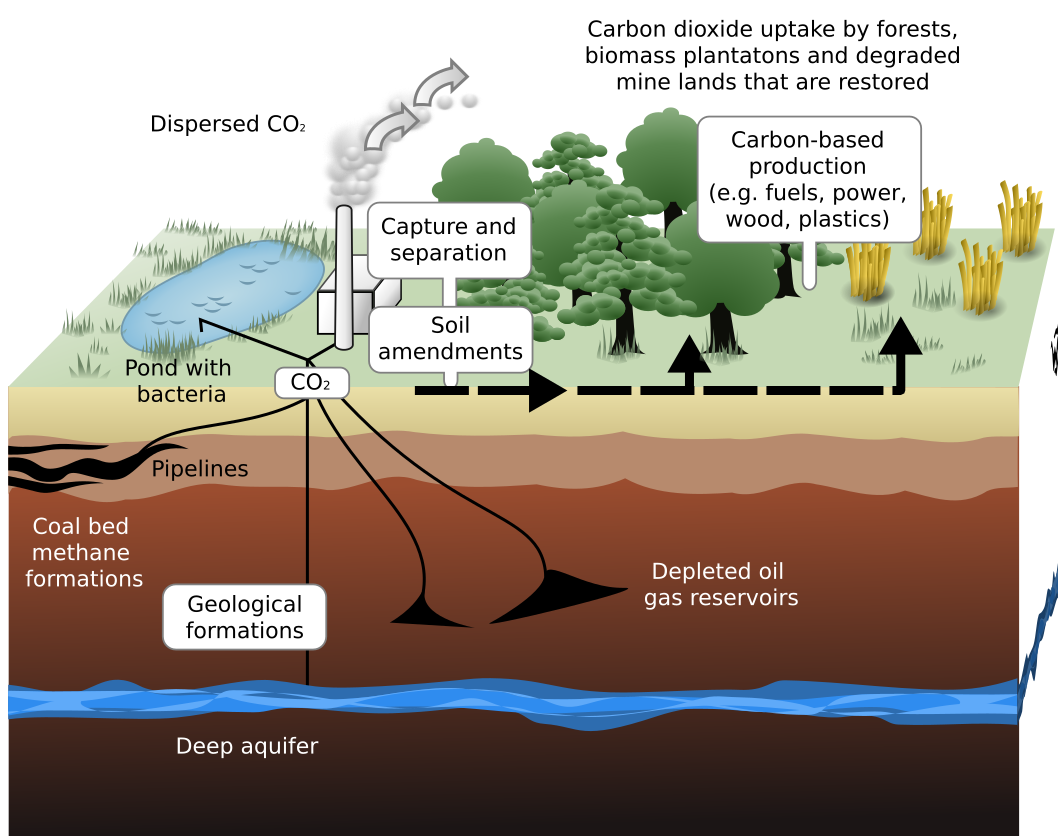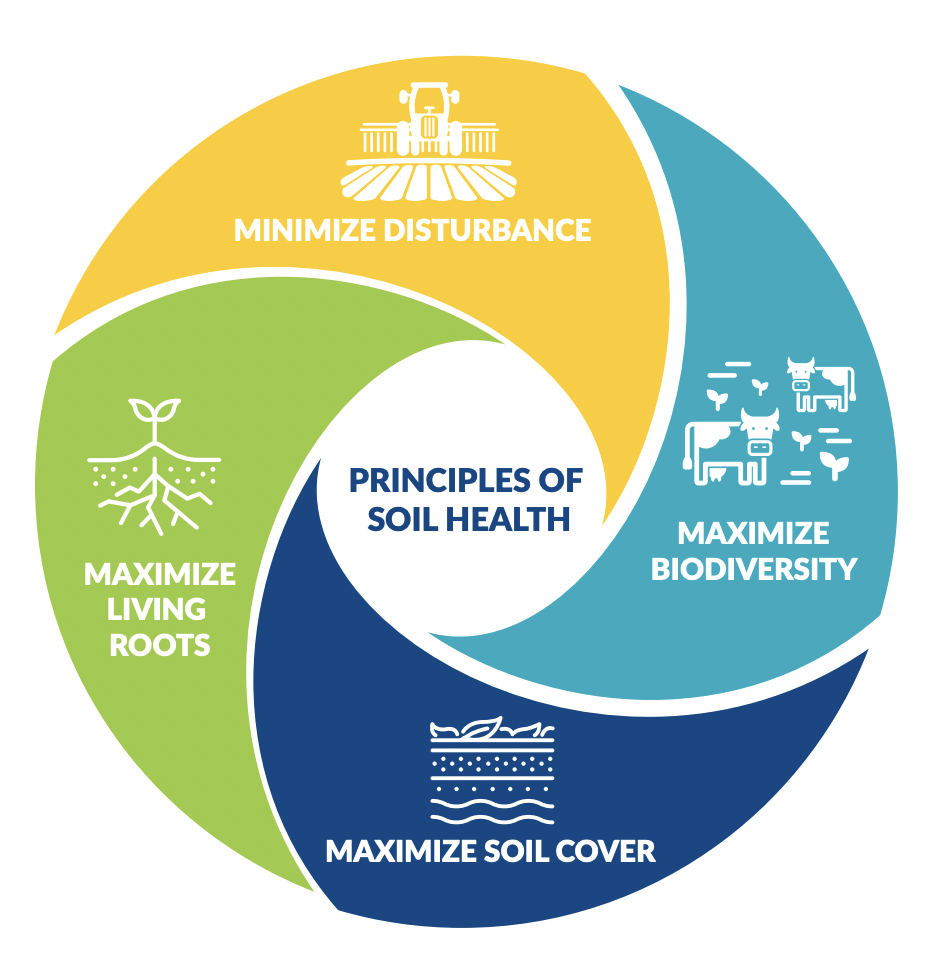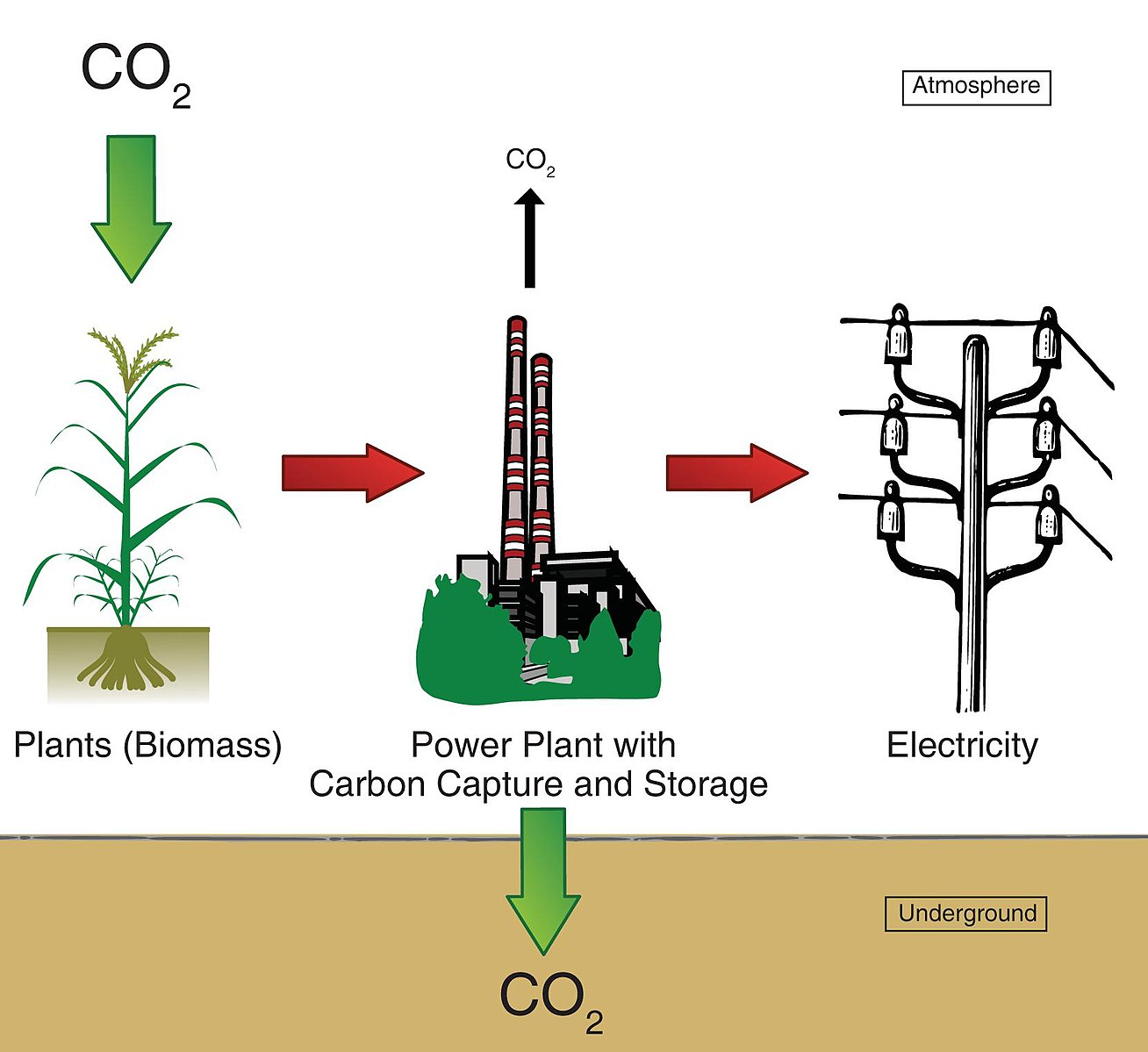IB Syllabus focus:
‘Measures include low-carbon technologies, reduced fossil burning/deforestation/soil disruption, re/afforestation, regenerative agriculture, and engineered sequestration.’
Managing the carbon cycle is critical for maintaining biosphere stability and limiting climate change. Strategies address human-driven imbalances by targeting emissions reduction, ecosystem restoration, and long-term carbon sequestration.
Human Impacts on the Carbon Cycle
Human activity has disrupted natural carbon fluxes, turning many natural carbon stores into sources. The main drivers include:
Burning of fossil fuels such as coal, oil, and natural gas.
Deforestation, which reduces forest carbon storage and increases atmospheric CO₂.
Soil disturbance through agriculture and urbanisation, releasing stored carbon.
These disruptions contribute significantly to atmospheric greenhouse gas concentrations, enhancing the greenhouse effect and accelerating global warming.
Strategies for Managing the Carbon Cycle
Low-Carbon Technologies
Low-carbon technologies reduce reliance on fossil fuels and minimise CO₂ emissions. Examples include:
Renewable energy sources such as solar, wind, and hydroelectric power.
Energy efficiency measures that decrease overall energy demand.
Carbon capture and storage (CCS), which removes CO₂ from industrial emissions before release.
Carbon Capture and Storage (CCS): A process of capturing CO₂ at emission sources, transporting it, and storing it underground in geological formations.
These technologies directly address emissions and form a critical part of mitigation strategies.
Reducing Fossil Fuel Burning
Reducing dependence on fossil fuels requires structural shifts in energy production and consumption:
Phasing out coal-fired power plants.
Incentivising cleaner transport options, including electric vehicles.
Implementing carbon pricing to discourage excessive emissions.
Such measures not only decrease atmospheric CO₂ but also improve air quality and reduce ecological degradation.
Forest Management: Deforestation vs Afforestation
Forests play a central role in the carbon cycle as both sinks and stores.
Deforestation releases stored carbon and decreases uptake capacity.
Reforestation (planting trees in deforested areas) and afforestation (planting in areas previously without forest) restore carbon sinks.

Simplified schematic showing CO₂ from a power plant directed either to terrestrial sequestration (forests/soils) or geological storage deep underground. Use it to contrast biological sinks with engineered storage options. Source.
Carbon Sink: A natural or artificial system that absorbs and stores more carbon than it releases.
Healthy forests stabilise climate by locking carbon into biomass and soils for decades or centuries.
Regenerative Agriculture
Conventional farming often depletes soil carbon through ploughing, chemical use, and monocultures. Regenerative agriculture reverses this trend by increasing soil organic matter.

Circular diagram showing the NRCS soil-health principles: minimise disturbance, maximise soil cover, maximise presence of living roots, and maximise biodiversity. These practices build soil organic matter and enhance carbon sequestration on farmland. Source.
Techniques include:
Cover cropping to protect and enrich soils.
No-till farming to minimise disturbance and preserve soil carbon.
Crop rotation and polycultures that enhance biodiversity and nutrient cycling.
Agroforestry, which integrates trees into farmland for additional carbon storage.
These practices boost soil fertility and resilience while increasing carbon sequestration.
Soil Protection and Restoration
Soils represent a vast store of carbon. Practices that protect soils include:
Preventing erosion through terracing, contour ploughing, or maintaining vegetation cover.
Avoiding excessive fertiliser use that accelerates decomposition.
Restoring degraded lands to improve carbon storage potential.
Such measures are vital because soils can either act as carbon sinks or significant carbon sources, depending on management.
Engineered Sequestration
Beyond natural processes, humans have developed engineered methods for long-term carbon storage. These include:
Direct Air Capture (DAC): Removing CO₂ directly from the atmosphere for storage or reuse.
Bioenergy with Carbon Capture and Storage (BECCS): Producing energy from biomass while capturing and storing the CO₂ emissions.
Mineral carbonation: Using minerals to chemically bind CO₂ into stable solid forms.

Two-panel diagram comparing a standard bioenergy plant (A) with BECCS (B), where CO₂ is captured and piped to underground storage. This clarifies how negative-emissions energy systems operate in practice. Source.
Lincoln Index (for capture–mark–recapture population estimates, adapted for conceptual comparison):
Population Size (N) = (M × C) / R
M = Number marked initially
C = Total caught second time
R = Number of marked recaptured
Although costly, engineered sequestration is increasingly seen as necessary to complement natural solutions.
Integrated Approaches
Effective management requires combining strategies across scales:
Global policies (e.g., Paris Agreement targets).
National legislation promoting renewables, conservation, and emissions reductions.
Local initiatives such as community reforestation or sustainable farming projects.
Together, these measures can realign the carbon cycle toward stability, preventing further planetary boundary transgression.
Key Challenges
Despite progress, managing the carbon cycle faces several challenges:
Economic costs of new technologies.
Political barriers and lack of international cooperation.
Time lag between implementation and measurable results.
Uncertainty in predicting long-term ecosystem responses.
Nevertheless, a combination of low-carbon technology, ecosystem restoration, sustainable farming, and engineered sequestration provides the most comprehensive pathway to stabilising the carbon cycle.
FAQ
Carbon pricing attaches a financial cost to releasing CO₂, either through a carbon tax or an emissions trading scheme. This makes fossil fuel use more expensive and incentivises cleaner alternatives.
Governments can reinvest revenue into renewable energy or conservation projects, further reinforcing low-carbon strategies.
Effectiveness varies depending on the technology, the type of facility, and geological conditions for storage.
Some methods, like direct air capture, are energy-intensive.
Geological storage requires careful monitoring to prevent leaks.
Long-term impacts remain uncertain, making large-scale reliability difficult to guarantee.
Soil organic matter binds carbon in stable forms that resist rapid decomposition.
Practices such as cover cropping and no-till farming enhance soil structure, reduce erosion, and increase microbial diversity, all of which promote greater carbon retention over decades.
Afforestation creates entirely new forest ecosystems in areas previously without trees. This may alter local biodiversity and hydrological cycles.
Reforestation restores ecosystems where forests once existed, often reintroducing native species and aiding habitat recovery.
Both contribute to carbon sequestration but may differ in ecological risks and benefits.
Mineral carbonation locks CO₂ into stable rock, making leakage almost impossible. It mimics natural weathering but at a faster rate.
However, it requires mining and transporting large volumes of rock, making it resource-intensive. Scaling it to offset global emissions is a significant logistical challenge.
Practice Questions
Question 1 (2 marks):
Identify two strategies that can reduce carbon emissions from human activities.
Mark scheme:
1 mark for each correct strategy.
Acceptable answers include:
Transition to renewable energy sources (e.g., solar, wind, hydro).
Carbon capture and storage (CCS).
Energy efficiency improvements.
Reduced fossil fuel burning.
Afforestation or reforestation.
Regenerative agriculture practices.
(Maximum 2 marks.)
Question 2 (5 marks):
Explain how reforestation and regenerative agriculture contribute to managing the carbon cycle.
Mark scheme:
1 mark: Reforestation definition – planting trees in previously deforested areas.
1 mark: Trees act as carbon sinks, absorbing CO₂ and storing it in biomass and soils.
1 mark: Regenerative agriculture definition – farming practices that restore soil organic matter.
1 mark: Examples of techniques (e.g., no-till farming, cover crops, agroforestry).
1 mark: Both strategies increase carbon sequestration and reduce atmospheric CO₂.
(Maximum 5 marks.)

